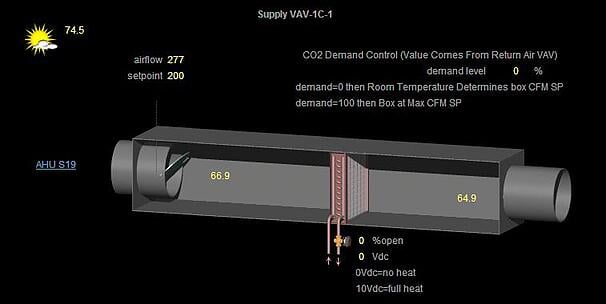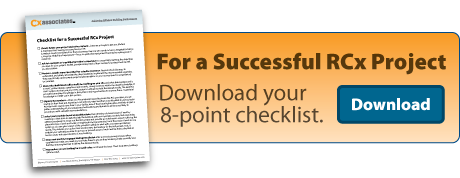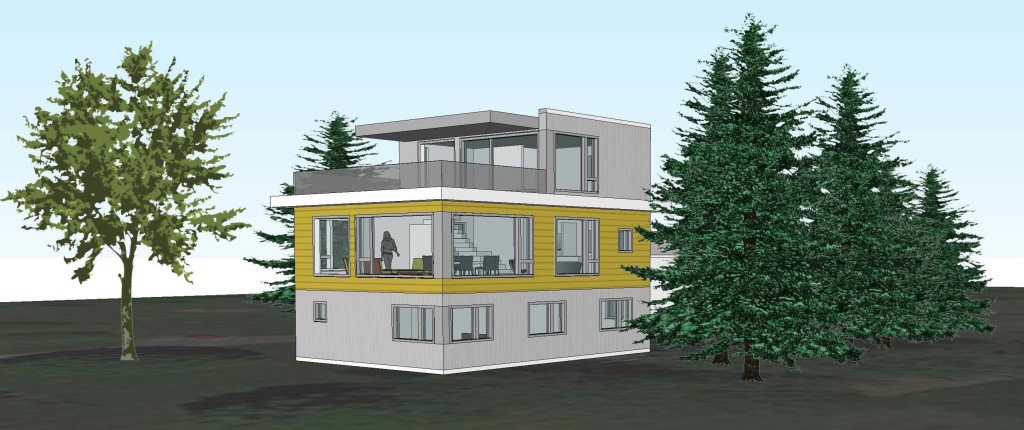Although I have commissioned a number of LEED New Construction projects, I have recently become involved in the LEED accreditation process for Existing Buildings (LEED EB). As part of the energy prerequisite, one requirement is to conduct an Energy Audit that is equivalent to ASHRAE Level 1 Energy Audit. This is the first of three levels of audits that ASHRAE has designed and more and more existing buildings are turning to this process to define energy savings opportunities within their buildings. Whether you are striving for LEED EB energy credit, or are focused on improving the longevity and operation of your building, a Level 1 Audit is a good place to define the roadmap to realizing these goals.
ASHRAE Level 1 Energy Audit Process
The Level 1 Audit focuses on a preliminary energy use analysis as well as a building walk through by a building energy expert. If you have already benchmarked your building, a significant portion of the energy analysis is complete but if you haven’t, ASHRAE provides all of the documentation you need to walk through this process.
The preliminary energy analysis includes the following tasks:
- Classify your building’s primary use (office, multi-family, medical office building, etc.). This can generally align with the classifications defined in Energy Star’s Portfolio Manager.
- Use utility data to calculate the energy use intensity (EUI) of your building. If you already track your building’s energy usage in a benchmarking program such as Portfolio Manager or WEGOwise, then this work is done for you.
- Compare your EUI to buildings similar to yours. A good resource for this is the Commercial Buildings Energy Consumption Survey (CBECS).
- Determine a target EUI and what your energy and cost savings would be if you reached this value. This needs to be a realistic number that is achievable and based on the energy audit findings. An energy consultant would be the best resource to help make this EUI determination.
The walk-through portion of the audit includes the following tasks:
- The owner and/or building facility manager (preferably both) meet with the energy auditor to discuss where there are issues with the building. Issues may be equipment-related, or may involve problems related to the equipment’s operation and maintenance. This meeting should also include a discussion regarding any future changes that are planned and their possible implications on the efficiency of the building.
- The walkthrough should be high-level; allowing the auditor to see the entire building and learn about how it’s constructed, what type of equipment it uses and how it is maintained. While surveying the building, the auditor should be able to identify opportunities that will improve the operation procedures and lower energy consumption. These changes should ideally be low cost or no cost (low flow water fixtures, improved fan control, installation of occupancy sensors in spaces that are rarely used, etc.). In addition, there could be larger improvements (equipment replacement, system upgrades, etc.) that would entail an additional study to determine if the energy savings are worth the cost.
- A final report would be provided to the building owner summarizing what was found and provide a rough estimate of upfront costs as well as savings for the opportunities. The owner or energy specialist uses this report to develop an action plan to implement the opportunities that fit the owner’s criteria. The successes of the audit can remain internal, with changes only benefitting the organization, or they can become public through a LEED EB accreditation process.
Examples of Findings
An energy audit is a learning experience for the building manager on the status and the opportunities for the building’s operation. Here are a few common items that are discussed at a Level 1 Audit:
- Persistent equipment issues, such as having to replace a heat exchanger in a boiler on a regular basis (labor and cost intensive). During the walk-through, an auditor can make suggestions or follow-up on how to proceed with fixing these issues on a long-term basis.
- Direct Digital Control (DDC) system programming issues. When a DDC system is difficult to adjust and/or understand, the efficiency of the building systems can suffer. An audit can highlight the influential problem areas and suggest solutions. An audit can also suggest altering control strategies for energy saving opportunities.
- New technologies. Lighting, lighting controls, motor controls (variable speed drives) and high-efficient HVAC equipment are now standard equipment that are highly cost-effective replacements. An audit can highlight opportunities that a building owner may not be aware of.
- Reviewing the operations and maintenance program to determine if it is working effectively. For example, how often should a filter be changed in a make-up air unit, and is this currently part of the routine maintenance work?
Tangible Benefits
An ASHRAE Level 1 Energy Audit is a great place to start with an existing building. Even if you’re not going for a LEED accreditation, this process is extremely beneficial. It can prove that your building is in fact running at its best or it can find some low-cost changes that can improve your energy consumption and overall comfort level of the building occupants. The results are tangible: lower energy bills, and fewer occupant complaints/maintenance calls.
In a future blog post, I will explain what is involved with the next level ASHRAE audit. If you’re interested in learning more about your building and where there might be opportunities to increase efficiency, please feel free to get in touch with us.







